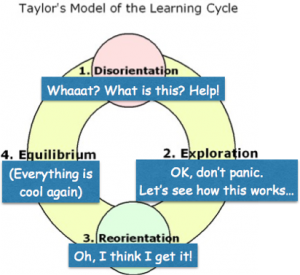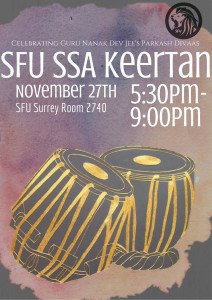Learning Journal 1
- Factual knowledge:
One piece of factual knowledge I acquired since the start of the course is the difference between cell “determination” and “specification”. Determination is the process by which a relatively unspecialized cell gets specialized features and this involves the change of a cell (or set of cells) from one identity to another that is not responsive to environmental factors. Specification is the process by which a cell becomes able to differentiate into a given cell type and this process is responsive to environmental factors.
2. Making connections:
I have previously learned that cells undergo a process by which they go from being totipotent cells to more and more specialized cell types. I was unclear that cell specification comes before cell determination and that it is more difficult to change the fate of a determined cell versus a specified cell. This allows a better understanding of various techniques that rely on this determined versus specified cell concept to establish the function/fate of various cell types. This concept of a specified cell versus a determined cell links to the concept of types of development. In mosaic development determination occurs earlier on than in regulative development. The definitions of determined and specified are essential to understand the concept of the two types of development, mosaic and regulative.
Learning Journal 2
1. New Concept:
A concept that I have understood in a new way is the idea of the factors at play during gene expression. I was previously aware of different components such as enhancers, repressors and the effect of access to the genome itself (such as euchromatic versus heterochromatic). The new piece I learned to this was the presence of insulators (regions of DNA that when near enhancers, block the binding of enhancers to the promotor region). Insulators are an important part of the greater gene expression puzzle because they determine which promoters an enhancer can even act on. I may have been introduced to the idea of insulators previously in other courses but placing them in the context of regulating enhancers is a level of interaction that I had not fully grasped before.
2. Thinking about this new concept:
Knowing the definition of an insulator is a factor rather than a concept, but placing it into the greater scheme of how gene expression is carried out is a new concept to me. I have a greater appreciation for the complexity that is gene expression now. Not only are there promoters that activate RNA polymerase activity to make RNA from DNA, where enhancers and repressors are interaction with said promoter to enhance or repress there are also insulators that effect those enhancers and repressors! The concept of how insulators engage with promotor/enhancer interaction can be very useful for experiments that look at gene expression as insulators effecting the enhancer/promotor interaction may be the reason that a gene is not being expressed versus the enhancer/promotor interaction specifically. In knowning these different factors at play and how they interact, experiments that manipulate one or more of these factors/interactions can be understood on a more holistic level.
Learning Journal #3
Two “things” that stood out
So far in BIOL 463 I have really enjoyed learning about new experimental techniques. In particular, 3C as well as the use of the chicken as a model system stood out to me. 3C is an experimental technique that allows us to determine if and how frequently a certain DNA sequence is physically close to another DNA sequence of interest. I initially found this technique very difficult to grasp but as the term has continued, and particular after the “Techniques Café” presentations by my peers, I found myself suggesting 3C as a possible approach to answer questions in this course as well as others. Next when going over the In-class assignment where we answered questions in regards to the What the Hox is going on? paper, I learned how chickens are used as model systems to study genes, development and mutations. Even when I read the paper, I did not fully grasp how interesting this concept was. In class I was surprised to learn that you can selectively infect certain parts of the embryo (for example the left versus the right side) with particular vectors that carry any gene of interest and then study the mutation phenotype in comparison to the wild-type phenotype in the same individual organism!
| Two things that stood out | Type of knowledge | What makes these things stand out for you | Evidence/how you would test someone on this | |
| 1 |
3C Technique |
Factual | Learning about this technique has helped me think of new ways to approach problems in BIOL 463 as well as other courses. | I would create an experiment or even a hypothesis that could be best solved by using the 3C method and then ask students to come up with possible experimental approaches to tackle this problem in the lab. As there are always multiple ways to approach a problem in the lab, by asking for multiple approaches one of the ways should be 3C. An example of such a problem could be around the idea of whether or not a given number of regulatory factors are working together to regulate a given gene or not – line in the case of chromatin loops. |
| 2 | Chick as Model Organism for studying with “Look Approach”
|
Conceptual | The idea that you can compare mutated and wild-type phenotype in the same organism was just very surprising and interesting to me. |
Learning Journal #4
- I looked at James’s blog
- I think of the the biggest strengths I noticed was the care to include the process he went through to come to a conclusion. Specifically looking at the write ups for his project, there is care to note what each step was that led to the final question or how it led to the next step. This allowed to the reader to have a better understanding of the grasp he has on his project as it was easy to follow along with the process.
A way to improve on the content would be to include more of the class work (something which I have to do myself as well). Another thought is that although I think all the posts are well done, they could be a little more concise.
Note: I was unable to figure out how to post this as a comment on his blog (perhaps this feature is not available to me) but I will make sure to share this information with him.
- The biggest similarity to my own blog is an attempt to lay out the though process rather than just the final conclusion to things, but I think I can learn a lot from James’s blog. Something I can take away and learn from him is the care he takes to write each post (such as including references, being very specific in the scientific information he presents). I tend to be more descriptive/ramble-y rather than precise so this is something that is different.
Learning Journal #5
If someone asked you, ‘What is the single most important thing that you learned in BIOL463?’ what would you answer and why?
I think one of the most valuable things I learned in BIOL 463 was how to tackle reading a scientific paper effectively and fully understand the material that is presented. If may of my other courses this term, we were also expected to use scientific papers in order to better understand course material, specifically BIOL 441 comes to mind. In contrast, with my other courses, BIOL 463 gave time to walk through the questions that should come up while reading a scientific paper as well as how to think critically while looking at the figures presented. Something that I found myself doing in other courses after working with the approach of BIOL 463 is asking how does this figure relate back to the title of the paper? This way of critically analyzing material that is presented, judging based on my own understanding whether or not material presented is sufficient or helpful to support the claims being made allows for a better understanding of not only the major claims of the paper but of experimental procedures being used. From being able to understand papers better, I was able to start thinking critically about the advantages and disadvantages of using a certain experimental technique and even try to come up with other experiments one could do to expand on the material presented in a paper. I learned that in order to understand science, you have to ask questions… blindly reading and accepting a scientific paper only gets you so far but it is when you think critically and sometimes even creatively about the material presented that you get the most out of it!
Below is one of the many models of the learning cycle (in humans). Can you apply it to your own experience as a learner? Do you remember situations where you experienced the stages presented in the diagram? What was it like? How did you progress from one stage to the next?
Please address this question for two different contexts, one of them being BIOL463 and the other being any context you want outside of school.
I think traveled around this circle multiple times during the term with BIOL 463. One specific example is the when we were covering X-chromosome inactivation. This was both new factual knowledge because I had not learned about X-chromosome inactivation before as well as new conceptual knowledge as in how X-chromosome inactivation resulted in various phenotypes. When I first came to class, I hadn’t done the background reading on the topic yet. I was very much so at stage 1 – disorientation! So after lecture, I started understanding a bit, through talking to my peers and asking a few questions in lecture. I think a key step is moving through these learning stages is being aware of where you are. In order to progress to where I was at 4 – Equilibrium, I had to admit that I had no idea what was going on. When I went back to try to find some background knowledge, I read the background paper given (Ahn, J.Y. (2008) X Chromosome inactivation). This background changed everything and I was able to proceed to reading the Midterm 2 material… where I ended up back in stage 1-2 for a while. 🙂
Outside of this course, this learning cycle can be applied to almost any new project or concept we try to tackle. I’ve recently started trying my hand at graphic design, specifically event posters for some of the volunteer projects I am a part of outside of campus. I’d like to think of myself as a creative person even though I’m not very handy with computers so this was a little bit of a tricky endeavor. I first went full blast into trying out Photoshop and InDesign – panic was very real. In order to progress, I chose to talk to some of my peers who are in Computer Science for some advice. Asking for some tips definition helped me start to understand this world of design a little better. Ultimately it was a combination of asking questions and trial and error that led me to being semi-competent at making posters. I’m still working on this so I would say I’m still at a stage 3, with more practice I think I will make my way through the final stages of learning. (That is until I find a new program to work with!)
Here is an example of a poster I made:


